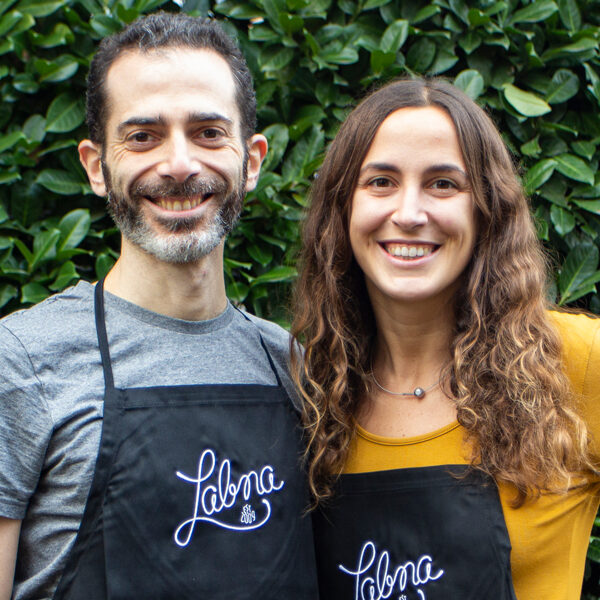Kashrut
Kosher or kasher is the label we give to food that complies with a complex system of rules of the Jewish religion, called kashrut or kasherut. Kashrut is the set of rules that govern what foods are allowed to a Jew and the proper way to prepare them. These regulations, which limit freedom to choose between pure and unclean animals, have the precise importance of reminding us that only the Lord is master of the universe and that we must therefore have mercy, not only toward human beings, but also toward animals.
Is it “kasher” or “kosher”?
When it comes to Jewish dietary rules, one often happens to read or hear slightly different terms: kosher or kasher (sometimes also cacher). The terms are both correct and obviously mean the same thing: they define food that is suitable for consumption according to the Jewish dietary rules.
The only difference is the pronunciation (and thus the transcription): kosher for Jews of Ashkenazi origin, in all English-speaking countries and Eastern Europe; kasher for Jews of Sephardic origin, preferred in many countries including Italy; cacher mostly used in France.
However you choose to pronounce the adjective, the rules of kosher cooking are the same for Jews all over the world and are based on the Bible and oral tradition: let’s look at them together.
Permitted food
Pure animals are ruminant quadrupeds with split hooves, such as cattle, sheep, and goats; however, only one of these two conditions is not enough for the animal to be kosher: this is the case with pigs and horses, which are in fact forbidden. Poultry and turkey, geese, and ducks are kosher, while birds of prey and nocturnal birds are prohibited.
We can only eat fishes that have scales and fins, so all shellfish and crustaceans are forbidden.
Although fruits and vegetables are all allowed, other restrictions apply to fruit: the fruit of a tree, for example, cannot be eaten in the first three years since the tree was planted.
Jewish ritual slaughter and the prohibition of blood
Another very important rule is not to eat the blood of animals, as blood is the symbol of life; that is why all animals must be slaughtered with a technique called shechitah, designed to keep the animal from suffering and to remove as much blood as possible from the meat.
Once the slaughtering has been carried out, it is necessary to check the animal carcass for defects, injuries, or signs of disease that would make the meat non-kosher. Parts that are considered unclean, such as the intestines and kidneys, some large arteries, some fats, tendons, and the sciatic nerve, are removed from the animal.
The meat, to be eaten, must then be soaked in water for half an hour, well sprinkled with salt for about another hour, and finally, after further washing, cooked.
The prohibition of mixin meat and milk
There is still a very strict prohibition we must adhere to concerning meat: we cannot eat meat and milk (or dairy products) together.
Indeed, we read in Exodus and Deuteronomy, “Do not cook the kid in its mother’s milk.”
For this reason, not only do you not consume meat and dairy products in the same meal, but you must have separate containers and dishes for meat and dairy foods, and we must wait at least six hours between the time we eat meat foods and the time we eat dairy foods.
Parve, halavi and basari
Because of the prohibition against mixing meat and milk in the same meal, all Jewish recipes and specifically also those you find on this site are divided into 3 major groups, which should make planning agile for those who find themselves, for example, preparing a kosher meal: kasher basari recipes, that is, those that contain meat; kasher halavi recipes, that is, those that contain dairy products; kasher parve recipes, that is, those that contain neither meat nor dairy products.
The rules for wine and spirits
Wine and spirits also have their own rules.
Wine is a staple of the Jewish religion and is used in ritual functions during holiday meals, as well as, of course, every week for Shabbat.
The rules for wine are succinctly these: the grapes must come from a vine at least four years old; all personnel who help process the grapes from the time they arrive at the winery must be observant Jews; the tools and facilities for harvesting, storage, and winemaking must be kosher and properly cleaned; any substance necessary for wine production, such as yeast, must be kosher.
There is a specific type of wine preparation, called mevushal, which ensures that the wine remains kosher even if it is touched by non-Jews: it is in fact a pasteurization process, in which the wine is brought to 89 degrees and then immediately down to 4 degrees. There are many very good kosher wines produced all over the world (even in Italy!): I highly recommend you try them, but if you are not religious I strongly advise against consuming mevushal wine, which is usually not very good.
Note
Most of the texts on this page were written by an important person in my life whom I remember very fondly: my elementary school teacher, Mora Lydia Flack Cabibbe. Mora Flack edited a small booklet to introduce children to Judaism and chose to dedicate it: to all children who study, for it is said, “The world exists only by their breath.”
All text on this page (or nearly all) is ©Morashá and Jewish Community Schools of Milan.
Reproduction without permission from the Jewish Community Schools of Milan is prohibited.

